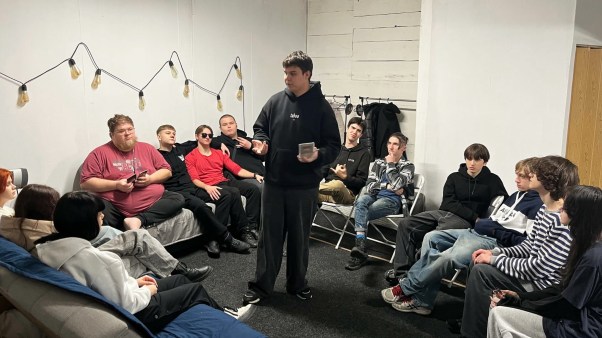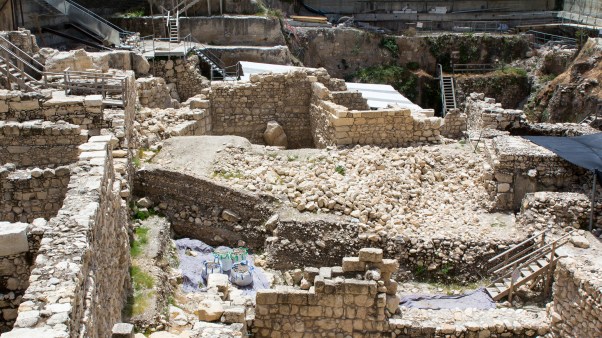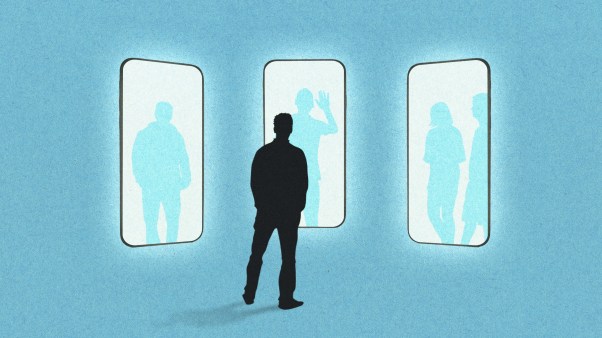Hurricane Katrina caused a record-setting 1,392 deaths and $200 billion in destruction (in 2025 dollars). Along with the unsung Christian heroes that emerged in the aftermath, two sectors of American enterprise that some reporters disparage acquitted themselves well: big companies and the military.
Wal-Mart made the biggest corporate impact. While Katrina was still classified as a tropical storm on August 23, 2005, six days before it hit New Orleans, Wal-Mart’s emergency operations center in Bentonville, Arkansas, was tracking it.
Soon, workers were shipping bottled water, flashlights, batteries, tarps, canned tuna, strawberry Pop-Tarts (ready to eat, tastes good), and other items to stores likely to be affected.
Once Katrina hit, Wal-Mart’s pre-positioned satellite phones and truckloads of water allowed the corporation to deliver supplies faster than any governmental organization. It quickly sent 1,900 trailer loads of emergency supplies to afflicted areas using its network of 126 facilities in the Gulf region. Wal-Mart also allowed managers to make decisions without requiring abundant paperwork.
In Waveland, Mississippi, where floodwaters within the store were two feet deep and refrigerators and shelves were knocked over, a manager had her stepbrother use a bulldozer to clear a path through the debris. She passed around socks, shoes, and dry underwear to barefoot neighbors and wet police officers. She handed out bottled water and sausages that had been stored high and gave insulin and drugs to AIDS patients.
In Jefferson Parish, outside New Orleans, a Wal-Mart employee used a forklift to open the warehouse door to deliver water to stranded elderly residents. The phone bank at the corporation’s Bentonville headquarters, first set up to help displaced employees, soon became the go-to operation for others who had no success with government bureaucracy.
The result was a wave of rave reviews by local officials.
“FEMA executives were there, but they didn’t do anything. They weren’t up and running for four or five days…,” said Jefferson Parish sheriff Harry Lee. “If the federal government would have responded as quickly as Wal-Mart, we could have saved more lives.”
Wal-Mart even helped a New Orleans couple find their newborn child, who had been moved to a Houston neonatal center.
Lee said FEMA made things worse: When Wal-Mart sent three trailer trucks with water to a FEMA compound, “much to my dismay, FEMA turned them away… They said they didn’t need it.” FEMA officials said they needed written authorization to accept such supplies and didn’t have any. So Wal-Mart distributed the water directly.
Philip Capitano, the mayor of one Jefferson Parish city, Kenner, said Wal-Mart arrived days before FEMA: “The only lifeline in Kenner was the Wal-Mart stores. We didn’t have looting on a mass scale because Wal-Mart showed up with food and water. FEMA needs to take a master class in logistics and mobilization from Wal-Mart.”
Some local broadcast stories starred “Wal-Mart angels,” and a few journalists drew logical lessons from business success. Denver Post columnist David Harsanyi noted that since government failed, “Why is the near-universal solution from pundits and officials to propose more government? Will we ever learn? … Judging by the results of Hurricane Katrina, we’d do ourselves a favor by hiring nongovernmental entities such as Wal-Mart.”
Fortune flared a headline, “The Only Lifeline Was the Wal-Mart” and dubbed Wal-Mart “an operation that could teach FEMA a thing or two.”
Home Depot also reacted like Wal-Mart, although on a smaller scale. It tracked buying patterns after past storms and stocked supplies customers would want. It dispatched generators, flashlights, batteries, and lumber to distribution areas outside where Katrina was expected to hit. Home Depot loaded fifty trucks with supplies in Houston and Tallahassee, Florida, so employees could head to stricken areas as soon as the hurricane passed.
The company was flexible enough to go beyond the usual inventories and have food and diapers available. It also had 500 employees from neighboring states waiting in hotels ready to staff Home Depot stores in case regular workers couldn’t make it or needed extra hands.
“At this point, customers are in shock. They don’t know what to do after a storm, so we have to help them,” said Paul Raines, president of the company’s Southern division. “In the early stages, they’re looking to put a tarp up, get a cover over a window, drain some water, just basically get some shelter. Right now, it’s very immediate—chain saws, generators, water. Roofing shingles and major construction comes a lot later.”
FedEx also responded well, which division head Dave Bronczek said was not surprising. “That’s the nature of our business. We’re used to dealing with crisis.”
Fortune described the company’s style, “At any given moment, somewhere in the world there is a social upheaval, a dangerous storm, a wildcat strike … . FedEx, which earns its money by being dependable, can’t afford a wait-and-see attitude; it moves in advance.”
Before Katrina hit, FedEx positioned 30,000 bags of ice, 30,000 gallons of water, and 85 home generators outside Baton Rouge and Tallahassee. The company also worked with the Red Cross, delivering 500 tons of relief supplies, mostly at no charge; FedEx also keeps at its hubs shipping containers filled with bandages, blankets, and batteries so material can be sent quickly to any disaster site.
While FedEx’s execs knew what was going on from hour to hour, FEMA couldn’t get enough food, water, and ice to Mississippi, with one official complaining in an email, “System appears broken … . There seems to be no way we will get commodities in amounts beyond those indicated below. And it turns out these shortfalls were known much earlier in the day, and we were not informed.’’
Wal-Mart, Home Depot, and FedEx were the big three among companies reacting to Katrina, but many others helped in their own ways. GE put together a team of 50 project engineers with expertise in portable water purification, medical equipment, and energy.
UPS helped FEMA direct people and supplies. Pfizer sent drugs into devastated areas and helped government agencies, hospitals, and retailers establish systems for storing and distributing drugs to evacuees. Georgia Pacific sent paper plates, napkins, and toilet paper.
Cingular was ready with hundreds of emergency generators to power cell towers shut down when electricity failed. Insurers flew in extra personnel and set up hotlines to process claims. Other companies suspended monthly mortgage or car payments. Small businesses also pitched in, with the US Chamber of Commerce’s non-profit Center for Corporate Citizenship becoming a clearinghouse that took calls from and compiled lists of needed supplies. Donor companies avoided tie-ups or duplication by agreeing to fill specific requests.
The armed forces also responded rapidly. Think of a team like the characters played by Mel Gibson and Danny Glover in Lethal Weapon, a madman and an honest cop. Those were the heroes of this battle of New Orleans. Some of the professionals were a bit of both: Coast Guard and Louisiana National Guard helicopter flyers swooped in even before the hurricane winds had subsided, coming in low past twisted power lines.
New Orleans Mayor Ray Nagin had visited the city’s convention center and quickly escaped from what he thought was danger, but the Coast Guard’s top official on the scene, Rear Admiral Bob Duncan, flew in with the first crews.
The Coast Guard used 50 helicopters and hundreds of boats to rescue 24,000 people by its count, including perhaps 4,000 from rooftops, and to move 9,000 of the most vulnerable from hospitals and nursing homes. Barges rescued hundreds of people stranded on broken levees.
Some helicopters flew from the Navy vessel Bataan and from National Guard units. Civilian search-and-rescue teams from out of state soon showed up, as did a volunteer Choppers based at Naval Air Station Pensacola, who elsewhere searched for survivors. When evening came, crews used night-vision goggles to look for the flickering candles, flashlights, or lanterns of survivors. They rescued hundreds, including an elderly man with emphysema who had been trapped in his home for six days.
Most journalists paid little attention to these efforts, but Connecticut Post columnist Peter Urban reported that a single 30-passenger Black Hawk of the Louisiana National Guard on that first Monday brought about 250 people to safety. The unit included 16 other 30-passenger Black Hawks, all stripped of seating to fly similar rescue missions. Some smaller helicopters landed directly on roofs to rescue the stranded, applying power so as not to collapse storm-weakened structures.
One-hundred-foot-long Marine Corps helicopters from North Carolina carried out up to 50 evacuees at a time. Paratroopers from the Army’s 82nd Airborne Division hunted for survivors using inflatable Zodiac craft.
Nearly 100 of the 650 people in Naval Mobile Construction Battalion 7 lost everything they owned, but day after day they headed out to other people’s homes to yank trees off roofs, build tent cities, or rig up water pumps to get dialysis machines running again.
Overall, the Katrina effort was the fastest massive military response to any hurricane ever. The Pentagon committed about 40,000 troops, 150 aircraft, and a dozen ships, including the carrier Truman, the amphibious ships Iwo Jima, Tortuga, Shreveport, and Whidbey Island, and the high-speed catamaran Swift. The one part of the federal government that did function well amid Katrina crisis was the military.














